Introduction
Training your Labrador Retriever is essential. It shapes their behavior and strengthens your bond. Labradors are intelligent and eager to please, which makes them great learners. However, they can also be stubborn or easily distracted, leading to training challenges. This article aims to provide effective training practices to help you raise a well-mannered Lab.
To kick off your training journey, consider using Dog Training Clickers. These handy gadgets are perfect for marking the exact moment your Lab performs the desired action, making training more effective and fun!
Summary and Overview
Labrador Retrievers are known for their friendly nature and intelligence. They make excellent family pets and service dogs. Their eagerness to learn makes them highly trainable. However, early training and socialization are crucial for a well-adjusted adult dog.
Starting training as a puppy lays the groundwork for good behavior. Labradors thrive on positive reinforcement, which encourages them to repeat desirable actions. Key components of Labrador training include basic commands, socialization with various people and environments, and consistent use of rewards. For more on this, check out effective positive reinforcement techniques for stubborn dogs.

Understanding how to motivate your Labrador through positive reinforcement can significantly enhance your training efforts. effective positive reinforcement techniques for stubborn dogs
In this guide, we will explore essential training techniques. These methods will help you teach your Labrador basic commands, proper social behavior, and effective communication. Expect to learn about the importance of patience and consistency, along with practical tips to make training enjoyable for you and your dog.
Understanding Your Labrador Retriever
The Labrador Temperament
Labrador Retrievers are known for their friendly and energetic nature. They thrive on human interaction and are often eager to please. This breed’s social disposition makes them great family pets. However, their high energy can lead to challenges during training. Labs can be easily distracted by sights and sounds, making focus essential. Common behavioral traits include jumping, barking, and a strong desire to explore. Recognizing these traits helps you adapt your training approach.
Labradors also exhibit a natural curiosity. This can be beneficial in training but can also lead to mischief if not managed. Early understanding of your Lab’s temperament can set the stage for effective training. With patience and consistency, you can channel their energy into positive behaviors.
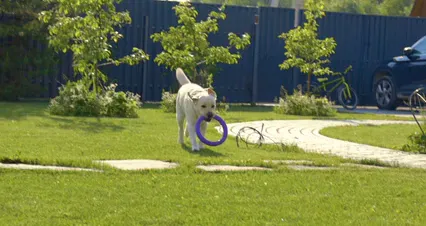
The Importance of Early Training
Early training is crucial for Labrador Retrievers. Starting as a puppy helps shape their behavior and build a strong foundation. Puppies are especially receptive to learning during their first few months. Research indicates that dogs trained early are less likely to develop behavioral problems later. Statistics show that early socialization can reduce anxiety and aggression in adult dogs.
Moreover, early training reinforces positive experiences. Labradors exposed to various environments, people, and other animals tend to be more adaptable. Engaging in training from a young age enhances their social skills. It also strengthens the bond between you and your furry friend. So, don’t wait—start training your Lab puppy today!

Speaking of adaptability, consider investing in a PetSafe Easy Walk Dog Harness. It can help you maintain control during walks, making the experience more pleasant for both you and your Lab.
Training Fundamentals
Basic Commands
Teaching basic commands is vital for every Labrador. Essential commands include “sit,” “stay,” “come,” and “heel.” These commands form the backbone of obedience training. Start with one command at a time to avoid overwhelming your dog. Use clear and consistent cues to help your Lab understand what you expect.
For example, when teaching “sit,” guide your dog into position with a treat. Once they sit, reward them immediately with praise or a treat. This positive reinforcement encourages them to repeat the behavior. Consistency is key. Always use the same command for each action. Over time, your Lab will associate the word with the action.
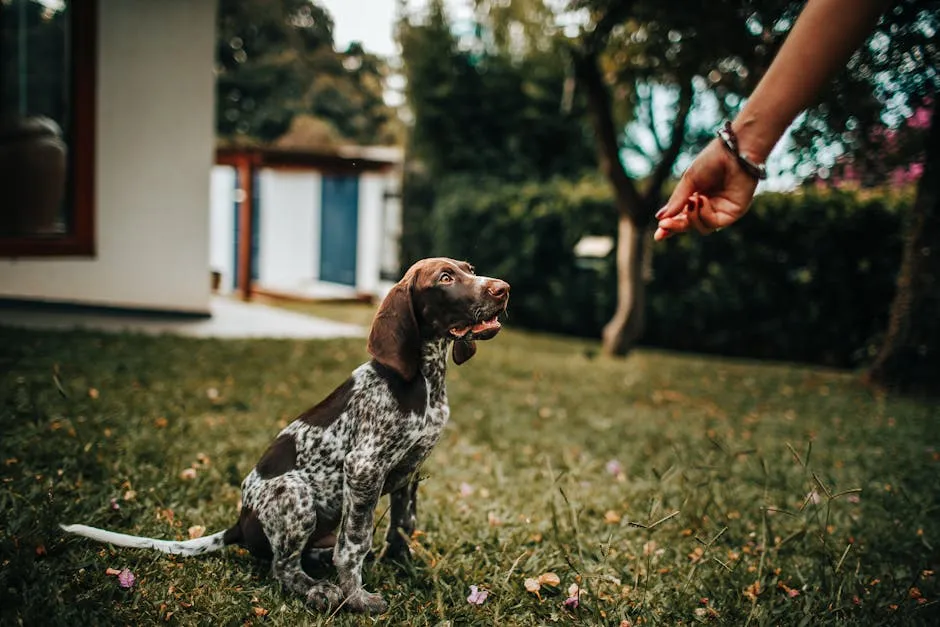
Practice these commands in various settings to reinforce learning. Start in a quiet environment and gradually introduce distractions. This helps your Lab learn to focus, even in busy situations. Teaching basic commands not only enhances obedience but also fosters a sense of security in your Labrador. With consistent practice, your Lab will become a well-mannered companion, ready for new challenges.
And while you’re at it, check out the Dog Training Treats (Chicken Flavor). They’re the perfect incentive for good behavior and will keep your Lab motivated during training sessions!
Socialization Techniques
Socialization is vital for Labrador Retrievers. It helps them grow into well-adjusted adults. Exposing Labs to various environments, people, and animals builds their confidence. A well-socialized Lab is less likely to develop anxiety or aggression. It also enhances their ability to adapt to new situations.
To socialize your Lab effectively, start early. Introduce your puppy to different sounds, sights, and smells. Take them to parks, pet-friendly stores, and around children. Encourage positive interactions with other dogs. Always supervise these encounters to ensure a safe experience.
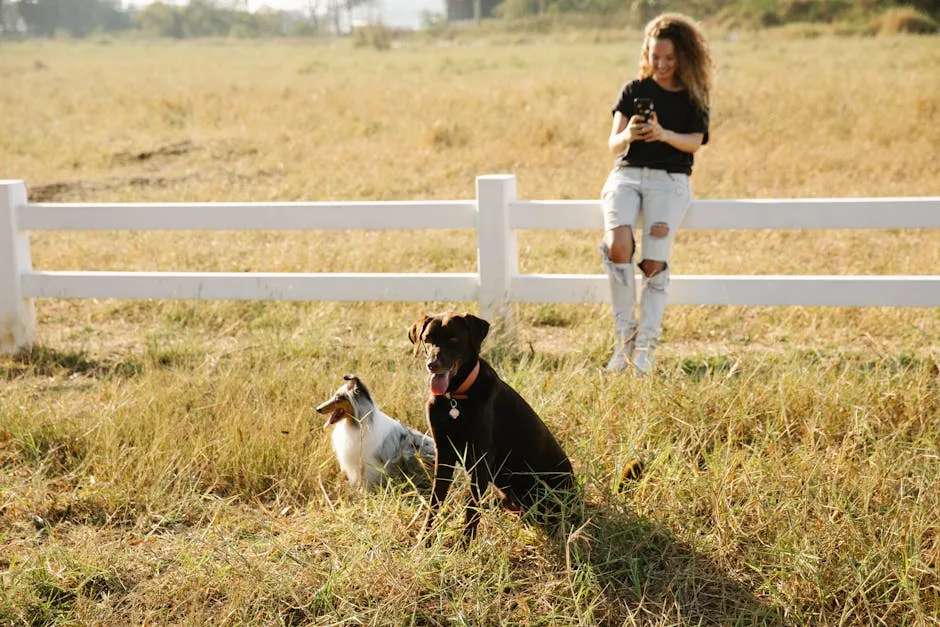
Keep the first experiences positive. Use treats and praise to reward good behavior. Gradually increase the complexity of social situations. For example, visit a busy dog park after your Lab is comfortable with smaller gatherings. Consistency is key; regularly expose them to new experiences for lasting benefits.
Positive Reinforcement Training
Positive reinforcement is an effective training method for Labradors. This approach rewards good behavior, encouraging your dog to repeat those actions. It’s based on the idea that behaviors followed by rewards are more likely to be repeated.
Rewards can take many forms. Treats are popular, but praise and playtime work well, too. For example, when your Lab sits on command, give them a treat and say, “Good boy!” Alternatively, engage them in a game of fetch. This not only reinforces the command but also strengthens your bond.
Be mindful of portion control with treats. Labradors love food and can gain weight easily. Adjust their meal portions if you’re using treats frequently. This will help maintain their health while you train them effectively.
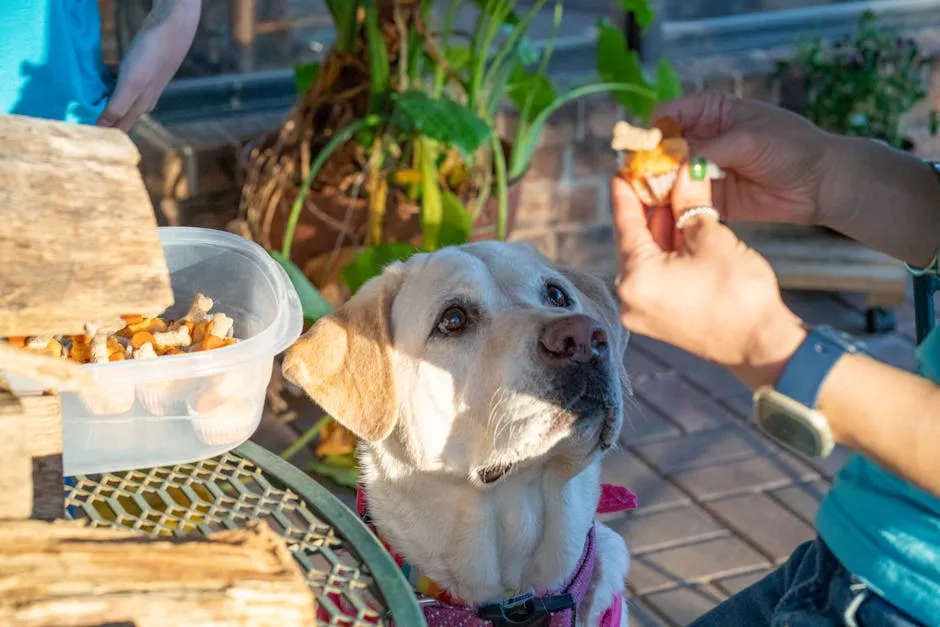
Advanced Training Techniques
Crate Training
Crate training is a beneficial method for managing your Lab’s behavior. It provides them with a safe space and helps with house training. A crate can also prevent destructive behaviors when you’re not home. To learn more about creating a positive crate environment, check out how to create a dog friendly space for stress free crate training.
Creating a secure and comfortable space for your Lab can make crate training more effective and enjoyable. how to create a dog friendly space for stress free crate training
Start by introducing the crate as a positive place. Use treats and toys to encourage your Lab to enter willingly. Gradually increase the time they spend inside. Always ensure they have a comfortable blanket and water.
A crate also aids in travel. It can be a familiar environment for your Lab during car trips. Moreover, it offers security during thunderstorms or fireworks, reducing anxiety. Over time, your Lab will learn that their crate is a safe haven.
Consistency is crucial in crate training. Never use the crate as a punishment. Instead, make it a space where they feel secure and relaxed. This helps your Lab develop a positive association with their crate, making it an effective tool for training and behavior management.
Leash Training
Leash pulling is a common issue with Labradors. They often get excited and pull ahead, making walks challenging. To counter this, practice loose-leash walking. Start with shorter walks in a quiet area. If your dog pulls, stop walking. Wait for them to return to your side before continuing. This teaches your Lab that pulling won’t get them where they want to go. For more tips on this, refer to dog leash training.
Learning how to effectively train your Lab to walk on a leash can enhance your outdoor experiences together. dog leash training
Another helpful tactic is to change directions frequently. This keeps your dog alert and focused on you. You can also reward them for walking beside you. Use treats or praise to reinforce good behavior. Over time, walks can become more enjoyable for both of you!
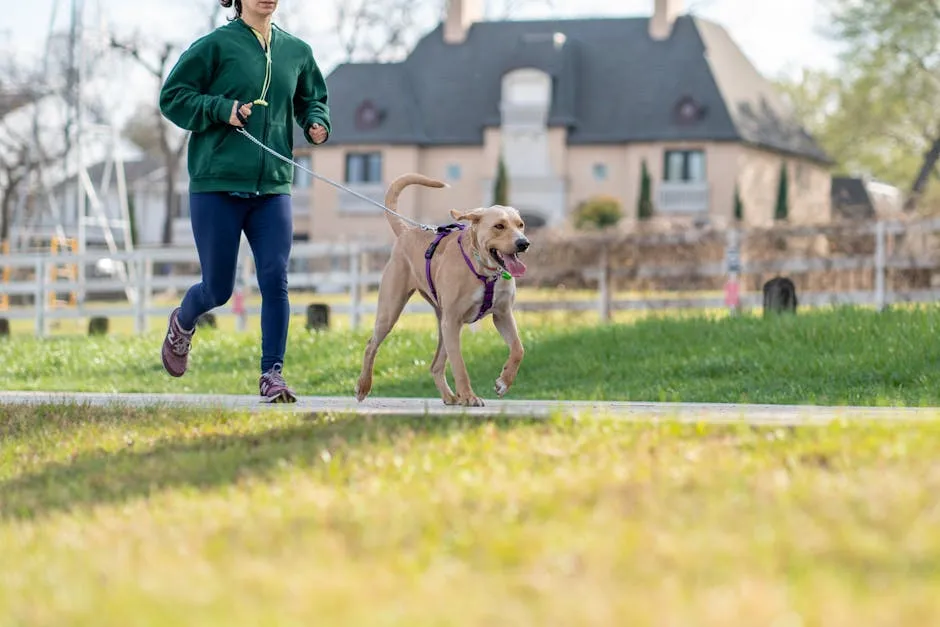
Addressing Behavioral Problems
Labradors can display several behavioral issues, including jumping, barking, and chewing. Jumping is often a sign of excitement or a need for attention. To address this, teach your Lab to sit when greeting people. Reward them for remaining calm. This creates a more pleasant interaction for everyone.
Barking can become problematic, especially if it disrupts your household. Determine the cause of the barking. Is your Lab bored or anxious? Providing enough exercise can help reduce excess barking. Engaging in interactive play can also keep them entertained.
Chewing is another common issue, especially with puppies. To prevent destructive chewing, provide appropriate chew toys. Redirect their attention to these toys when they start to chew on furniture or shoes. Consistency is key. If you catch your Lab in the act, gently correct them and offer the toy instead.
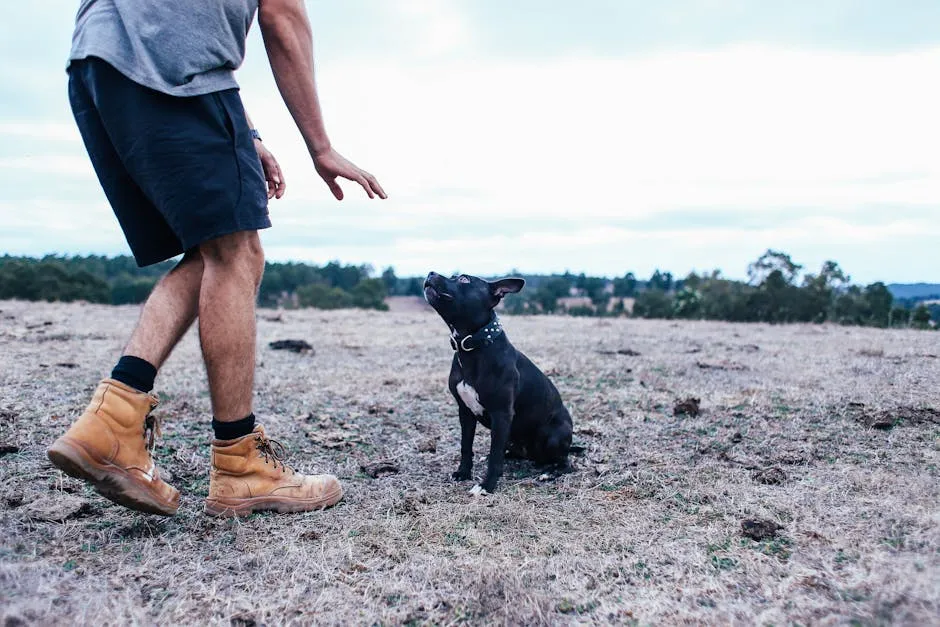
Speaking of chew toys, consider the Nylabone DuraChew Textured Dog Chew. It’s a durable option that will keep your Lab engaged and away from your furniture!
Fun Training Activities
Engaging Games and Exercises
Training doesn’t have to be all about commands. Incorporating fun games can reinforce training while strengthening your bond. One popular activity is fetch. It taps into your Lab’s natural retrieving instincts. Start with a toy they love. Throw it a short distance and encourage them to bring it back.
Another great game is hide and seek. This can be played indoors or outdoors. Have someone hold your Lab while you hide. Once you’re hidden, call your dog. They’ll love the challenge of finding you! This game also reinforces recall, which is essential for a well-trained dog.
Puzzle toys can offer mental stimulation, too. These toys require your Lab to figure out how to get a treat. They keep your dog entertained and mentally sharp. Engaging in these activities will make training feel less like a chore and more like playtime.
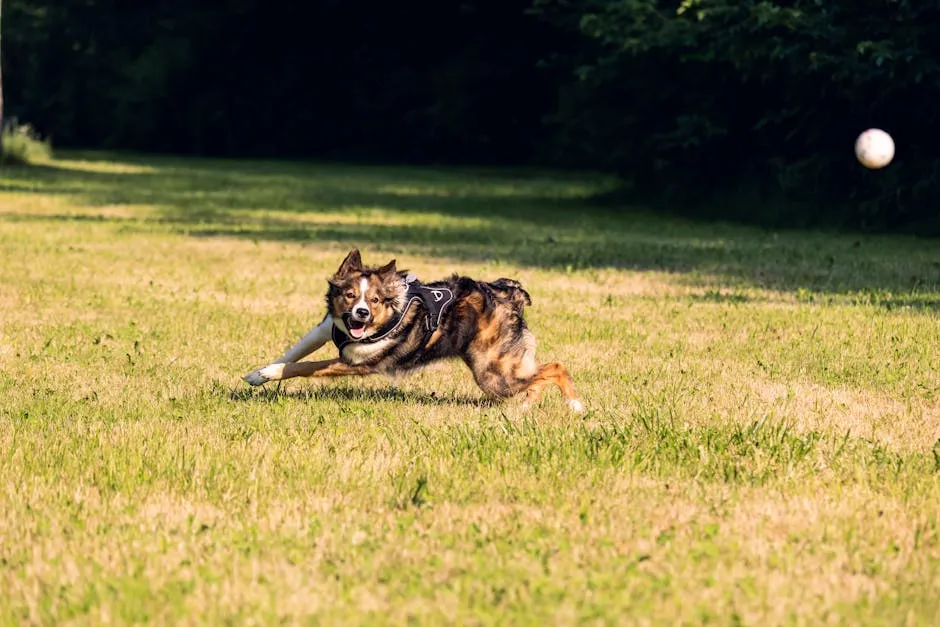
For an exciting twist on playtime, try the Outward Hound Hide-A-Squirrel Puzzle Toy. It’s a fun way to engage your Lab’s brain and satisfy their hunting instincts!
Introduction to Agility Training
Agility training is a fantastic way to engage your Labrador. It combines physical exercise with mental challenges. This fun sport involves navigating obstacles like jumps and tunnels. It’s not just about speed; accuracy and control are essential. Agility training enhances your dog’s coordination and confidence. It’s a great way to bond and have fun together. Plus, it helps burn off that excess energy Labradors are known for! For more tips, see how to enhance dog agility training with obstacle variations.
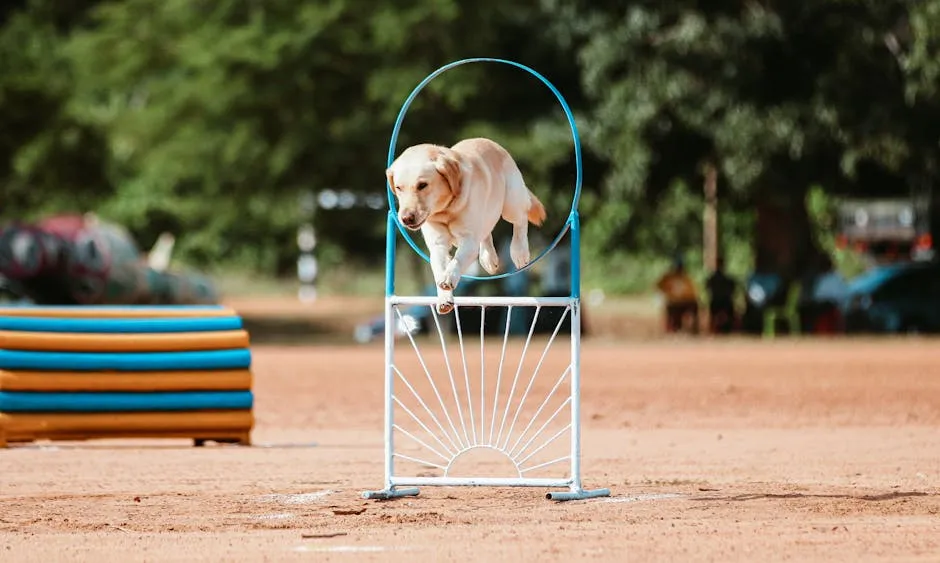
Engaging your Lab in agility training can significantly improve their physical and mental skills. how to enhance dog agility training with obstacle variations
Training Resources and Tools
Recommended Books and Online Courses
When it comes to training your Labrador, having the right resources is key. Here are some popular books and online courses:
1. “Training Your Labrador Retriever” by September Morn – This book covers essential obedience training and behavior management. You can find it here.
2. “The Art of Raising a Puppy” by The Monks of New Skete – A comprehensive guide for new puppy owners. Grab your copy here.
3. Online Course: “Labrador Training 101” on Udemy – This course offers video tutorials on obedience and socialization techniques.
4. “Labrador Training: The Complete Guide” by Lisa M. – Features training tips and advice tailored for Labradors. You can find this excellent resource here.
These resources provide valuable insights and strategies to enhance your training journey.
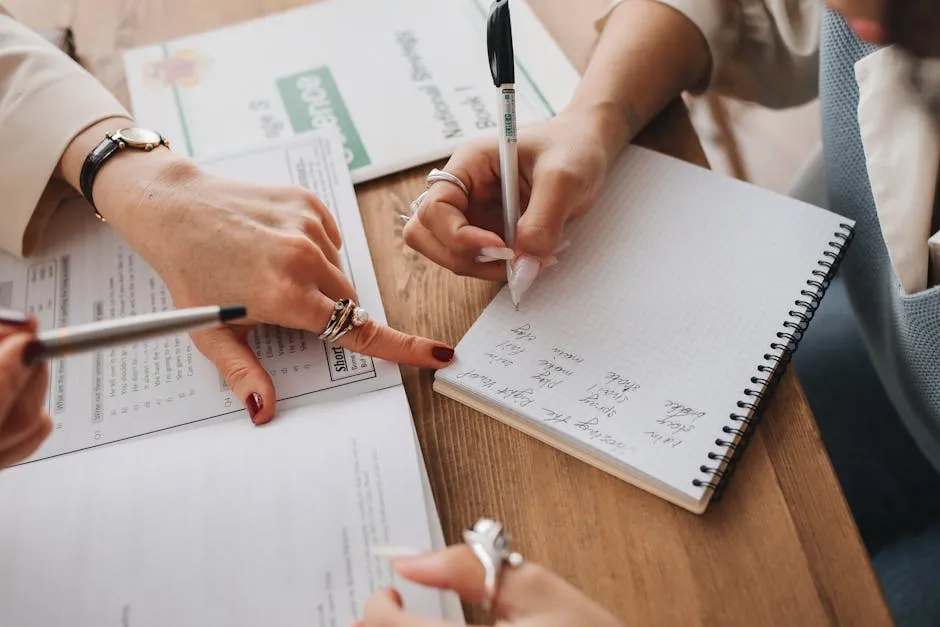
Training Equipment
Having the right training equipment can make a significant difference in your Labrador’s training experience. Here are some essentials you should consider:
– Collars and Leashes: A sturdy leash and a comfortable collar are crucial. Consider a harness for more control during walks.
– Training Treats: Use small, tasty treats to reward your Lab. This encourages positive behavior and keeps them motivated.
– Clicker: A clicker is an excellent tool for marking desired behaviors. It helps your dog associate the sound with a reward.
– Agility Equipment: If you plan on agility training, invest in beginner equipment like jumps and tunnels. You can find many affordable options online, such as the Dog Agility Equipment Set.
These tools will support your training efforts and help your Labrador learn effectively.
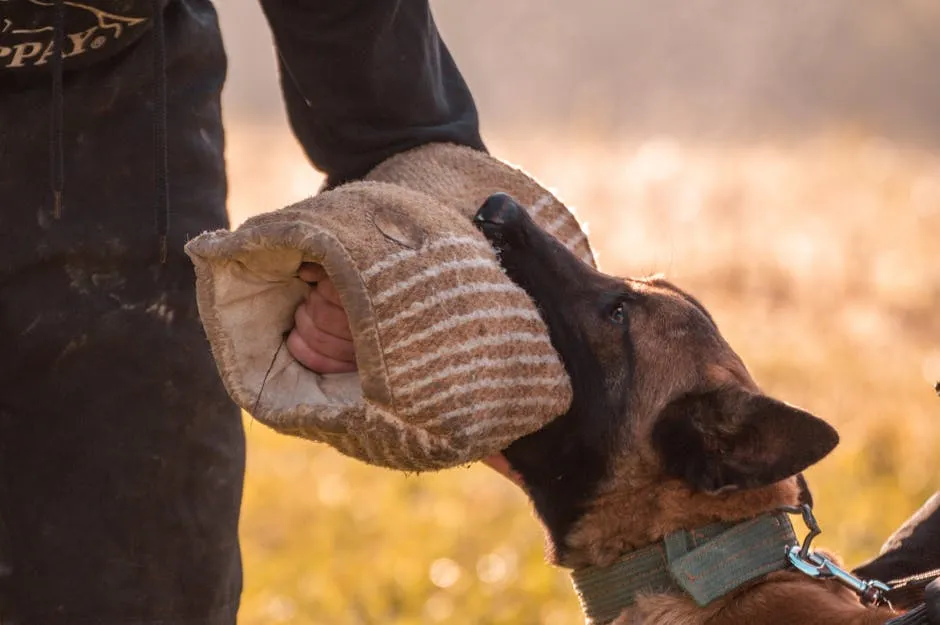
Conclusion
In summary, training your Labrador is a rewarding experience. Early and consistent training lays the groundwork for good behavior. With the right resources and equipment, you can make training fun and engaging. A well-trained Lab brings joy and companionship to your life. Start training today and enjoy the many benefits of a well-mannered furry friend!
And don’t forget to keep your Lab looking sharp with a stylish Dog Collar with GPS Tracker. It’s a great way to ensure their safety while adding a touch of flair!
Please let us know what you think about our content by leaving a comment down below!
Thank you for reading till here 🙂
All images from Pexels





